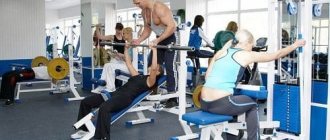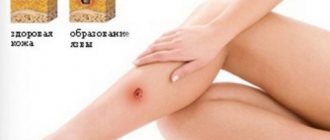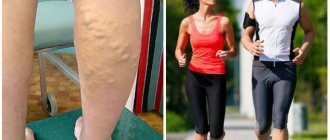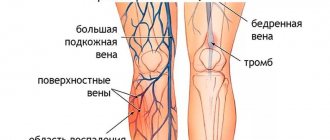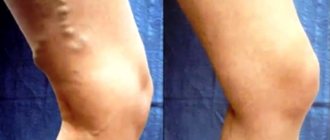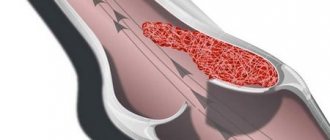Preparation for exercise therapy
Before you begin exercise, you should activate your lymphatic system.
This is done as follows (the sequence is performed at least 3 times):
- Hands lightly rub the surface of the face, neck, ears until a feeling of warmth arises.
- The palm of the right hand strokes the inner surface of the left hand from the fingers to the shoulder joint. Then the hands change. The external surfaces of the upper limbs are also affected.
- The left hand is placed on the anterior abdominal wall. Smooth circular movements are carried out counterclockwise.
- The right hand is on the chest near the heart muscle. Circular movements are performed clockwise.
- In a sitting position, alternately rub the surface of both legs from bottom to top.
- Take a lying position and relax for a few minutes.
- You should tense your arm muscles for a short time and then relax them. Perform this alternation of muscle tension and relaxation for 60 seconds.
- Repeat successive short-term tension and relaxation with the muscles of the legs, and then with the muscles of the chest and anterior abdominal wall.
Diagnosis and treatment of postmastectomy lymphostasis
The first stage of diagnosis is a thorough questioning of the patient about the time and nature of the onset of symptoms. After this, it is necessary to conduct a thorough examination of the limb and the adjacent anatomical areas where the lymph nodes were removed for breast cancer.
All patients undergo a general and biochemical blood test, as well as urine examination. These tests can detect leukocytosis (increased number of white blood cells), accelerated erythrocyte sedimentation rate (ESR), increased concentrations of fibrinogen and C-reactive protein. These changes in blood tests indicate an inflammatory process in the body and may indicate the addition of infectious complications to lymphostasis.
Consultation with a general or thoracic surgeon is required
The doctor must carefully examine the patient’s chest, assess the state of venous and lymphatic drainage, and also pay great attention to postoperative scars. To assess the functioning of the lymphatic system, lymphography is performed
In cases of early treatment, the patient must consult a vascular surgeon, lymphologist or phlebologist. A medical specialist will be able to identify the cause of the development of edema, and will also prescribe a series of general tests and ultrasound to clarify the diagnosis. In some patients, lymphoscintigraphy is used, which allows one to assess the performance of the lymphatic system using radioactive isotopes.
It is very important to exclude the patient from developing venous thrombosis, which manifests itself with similar symptoms but requires completely different treatment methods. The main methods used to treat lymphostasis depend on the stage of the disease and the characteristics of the individual patient.
The main methods used to treat lymphostasis depend on the stage of the disease and the characteristics of the individual patient.
General principles of treatment of the disease:
- Use of medications.
- A special massage that promotes the outflow of lymph through the distant lymph nodes of the axillary area.
- Careful hand care - wearing a medical bandage, underwear, using various ointments and creams;
- Medical massage and therapeutic exercises.
Drug therapy for lymphostasis
Several groups of drugs are used to treat lymphostasis. The most commonly used drugs are those that improve blood circulation (Actovegin, Pentoxifylline, Trental and others), which help normalize blood and lymph circulation in the affected limb.
When an infectious process is associated with lymphostasis, antibacterial agents are used to quickly cope with various bacteria. For this purpose, Amoxicillin, Amoxiclav, Cefipem, Cefotaxime and other drugs from a number of cephalosporins are used.
Using massage for treatment
Massage is widely used to treat lymphedema. Firstly, this is due to its high efficiency, and, secondly, to the convenience of the procedure - the massage is performed either by the patient himself or by another person. The patient and those who will do the massage are first taught the technique.
There are two main options for massage to treat lymphostasis:
the hand with swelling, or from the side of the previous mastectomy, is raised up and rested on some vertical surface. A massage is performed with the free hand, lightly stroking the arm with lymphostasis in the direction from the fingers to the elbow, and then to the shoulder. Ointments are often used additionally. This manipulation helps relieve swelling; simultaneously massage from all sides, starting from the side surfaces. The massage should be soft and slow, creating gentle pressure on the skin
It is very important that the massage is not accompanied by pain or discomfort.
The massage lasts from five to seven minutes. Depending on the intensity of swelling and the presence of accompanying symptoms, the massage is repeated after 2-4 hours. In addition, it is necessary to do special exercises that improve lymph flow in the affected limb and axillary area. Patients are also prescribed a special diet.
The right diet
To overcome lymphostasis, its treatment at home should be accompanied by a complete change of diet and normalization of the daily routine.
An important aspect is the consumption of protein foods - animal meat and fish, quail or chicken eggs, dairy products. The meat should not be fatty; it is best to boil or stew it.
Increase your consumption of fruits, vegetables, green tea. In addition to a huge range of vitamins and minerals, they contain antioxidants that fight inflammation in the body.
Proper nutrition
Fats should also be present in the diet, but only those contained in vegetable oil and fish. Fats are part of cell membranes, so without them there can be no talk of any restoration of body cells.
Carbohydrates need to be practically reduced. They contribute to the appearance of excess weight, which can significantly aggravate the course of the disease. It is worth giving up sweets, flour products and other foods containing fast carbohydrates.
Consume the minimum amount of salt; it is best to exclude it from the diet completely.
Recommended exercise therapy complex
The physical therapy proposed below for lymphostasis is recommended only in the initial stages of the disease or as a preventive measure for the development of pathology. In advanced forms of the disease, it is necessary to consult with your doctor about acceptable physical activity.
Latest information: Fatigue and heaviness in the legs
Special recommendation: it is not recommended to change the order of the proposed exercises: they are selected so as to gradually engage small muscles and vessels first, and then provide larger ones. This order of movements helps to squeeze out excess fluid from the periphery towards large vessels. All exercises should be done while lying on your back.
The order of performing gymnastics:
- Warming up Tighten your toes and slide your heels along the surface. The movement should occur due to the work of the ankle.
- Flexion and extension of the ankle joint. When bending, the toes should be as tense as possible.
- Rotation of the ankle joint. To do this, you need to slightly raise your heels above the floor and make rotational movements with your feet - clockwise and counterclockwise. During your first workouts, to make this exercise easier, you can place a small cushion under your calf muscles.
- Raise your legs and bend and straighten your knees.
- Do stretches. You should imagine that you need to reach with your toes to some object lying far on the floor, and diligently pull your leg, achieving the feeling of stretching the muscles. Repeat the same with the other limb. Stretching will help get rid of muscle tension and speed up lymph flow.
- Bike. There is no need to describe how to perform this exercise, familiar to everyone since childhood. With lymphostasis, leg movements should be slow and performed with maximum amplitude.
- Movement in the hip joint. Bend your knees, resting your heels on the surface, spreading your hips as much as possible (you can help yourself by slightly pressing your hand on the inner surface of the thigh). The movement should not cause pain or discomfort, a person should only feel pleasant warmth and a feeling of tension in the muscles.
- Leg lift. Alternating straight leg raises help improve blood circulation and reduce swelling. At first, lifting straight limbs may seem difficult, and patients are advised to first raise their leg bent at the knee and then straighten it. Gradually, the muscles of the thighs and abdominals will strengthen, and the exercise will no longer seem difficult.
- Limb separation. Raise your legs up and smoothly move them apart and connect them together again.
- Shaking allows you to get rid of muscle tension that arose during training. Raise your limbs up and make frequent shaking movements (if done correctly, you will feel a vibration sensation).
Physiotherapists recommend shaking not only on the legs, but also on the arms to prevent lymphostasis
Doctors note that impaired lymph flow in one leg increases the risk of developing a similar pathology in other limbs and it is worth paying attention to the prevention of the disease
The proposed gymnastic complex takes 15-20 minutes in time, it can be used as morning exercises and in the evening. It is not recommended to exercise immediately before going to bed: acceleration can cause difficulty falling asleep.
For lymphostasis, exercise therapy is considered the main element of treatment. Simple movements that improve lymph flow help reduce swelling and improve overall well-being.
Exercises for lymph stagnation in the legs
Some people suffer from swelling in the lower extremities. Swollen legs cause especially a lot of suffering in the evening, when they “fill up” and swell.
There are exercises that help the outflow of fluid in the legs: 1. In a lying position, rest your legs raised up against the wall and push your pelvis forward. 2. In a lying position, lift your legs up and rotate your feet 20 times, then clench and unclench your toes the same number of times. 3. While lying on the floor, move your heels up and down, without lifting them from the floor, and bending only your knees. 4. The “bicycle” exercise, well known to everyone from school physical education lessons, works very effectively for stagnation of lymph in the legs. To enhance the effect, you can do it alternately with each leg. 5. Pull each leg to your chest one by one, lying on your side (on the right - the left leg, on the left - the right). 6. Raise each leg up in turn in the same position as in the previous exercise. Even if one leg swells more than the other, you still need to use both limbs evenly in these exercises. These exercises should not cause discomfort during or after execution - muscle strain, fatigue. If everything doesn't work out, just be patient and continue at your own pace.
By the way, if your legs are swollen, it is useful to lift them up as often as possible during the day. The same rule also works for those who have severely swollen hands.
Before starting classes, it would be optimal to undergo a diagnosis from a therapist in order to determine the true cause of the edema. Because if swelling is only an external manifestation, for example, of hormonal disorders, then until you put this important area of health in order, any exercise will only have a short-term effect.
Several factors need to be excluded:
- Pregnancy (this is the main contraindication, since swelling is natural in this state)
- Hormonal imbalance (reproductive or thyroid problems)
- Acute and chronic inflammatory processes in the body (even persistent sore throats can cause lymph stagnation)
- Allergy
- Kidney disease (the main organ that removes fluid from the body)
- Heart failure
- Taking certain medications that have similar side effects (birth control pills, non-steroidal anti-inflammatory drugs, etc.)
Latest information: Aspirin for thrombosis against blood clots
Each of the factors listed above can provoke fluid retention in the body, therefore, without solving the initial problem, the consequences cannot be eliminated. Published by econet.ru
Stages of progression
The disease is characterized by stages - gradual progression of soft tissue damage:
| Stage | Description |
| First stage | It is characterized by the appearance of mild swelling, which is more noticeable in the evening, after physical exertion, prolonged standing, sitting, or long walking. At this stage, treatment is most effective, since there is no proliferation of connective tissue. |
| Second stage | The swelling becomes irreversible, and fibrous fibers grow throughout the entire thickness of the lymphedema. The skin thickens and stretches, which causes pain. When you press with your finger, a hole remains that does not straighten out for a long time. Patients complain of increased fatigue with little activity, muscle twitching. |
| Third stage | Refers to a severe course of lymphostasis, elephantiasis develops - the leg increases significantly in volume, loses its physiological contours, its mobility is sharply limited. Joint stiffness and osteoarthritis develop. The skin becomes sensitive to damage, and trophic disorders occur. |
Rules for conducting exercise therapy
Before performing therapeutic exercises, you should consult your doctor. Despite the fact that there are no contraindications for exercise therapy other than pregnancy, the doctor can give special recommendations on physical activity and advise on the specifics of performing exercises. General recommendations would be:
- Preliminary preparation. Before you begin physical activity on your leg, especially if there are signs of swelling, you need to massage the limb. The massage is done with soft rubbing movements from the toes to the knees.
- Muscle tension. You need to try to tense all the muscles of your leg from the foot to the thigh, hold them in this position for several seconds and relax. After several cycles of tension and relaxation, the same should be done on the other lower limb.
- Use compression garments. All exercises are done only after putting on compression stockings or wrapping with an elastic bandage. The elasticity of compression products (degree of compression) is selected individually for patients.
- Don't overexert yourself. Healthy training should not cause severe fatigue, and when performing movements, breathing and heart rate should increase slightly. At the first sign of fatigue, you should stop exercising and rest a little.
- Without pain. If any of the movements recommended by the doctor is painful, then you should refuse to perform it.
During the first workouts, especially with severe disturbances in lymph flow, a feeling of fatigue will appear after 3–5 movements, but as muscle tone improves and swelling decreases, it will be possible to perform each exercise 7–10 times.
Preventive measures
Having lymphostasis of the lower extremities and after treatment with folk remedies, we must not forget about prevention in order to protect ourselves from relapse of the disease.
Some recommendations for observing the prevention of lymphostasis:
- drink at least 1.5-2 liters of water per day;
- spend time walking or cycling every day;
- exercises in the pool are useful;
- women should stop wearing high-heeled shoes - walking in these shoes significantly increases the load on already damaged limbs;
- Don't forget to wear compression clothing, especially when playing sports.
Gymnastics and exercises for lymphostasis
Gymnastics for lymphostasis can be performed by everyone except pregnant women, without any restrictions. Do the exercises as soon as you wake up and in the evening before going to bed. If you have time, do them during the day too. Do the exercises slowly and without stopping. There should be no feeling of fatigue after finishing the exercises.
Gymnastics for lymphostasis
Using light movements from bottom to top (after all, we remember that lymph flows from bottom to top, therefore all exercises and massage should be performed from bottom to top, not the other way around), rub your face, then your neck, ears until a slight warmth appears.
Rub the inner surface of your left hand with your right hand from palm to shoulder from bottom to top. Repeat the same steps with your left hand. After this, rub the outer surface of your hands one by one.
Place your left hand on your stomach and your right hand on your chest near your heart. Move your palms in smooth circular movements: the left one counterclockwise and the right one clockwise.
Sit on a chair or on the edge of the bed and clasp your thighs with your palms. Using smooth movements, rub your legs from the foot to the thigh with your palms. Do this several times
Repeat these exercises with the other leg.
The previous exercises are necessary to warm up your body and prepare it for the most important thing in gymnastics during lymphatic stagnation - activating the lymphatic system.
Lie down, relax for a few minutes, then begin to strain your arm muscles: literally strain your arm muscles for a second and immediately relax them. This exercise must be done for one minute. Then do the same with the leg muscles, then with the chest muscles and, finally, with the abdominal muscles.
For the first 4-5 days from the start of classes, do the exercises 3 times, as soon as the muscles become more trained, increase the load by increasing the number of repetitions. The main thing when performing exercises for lymphostasis is that after exercise you do not feel tired.
Gymnastics for lymphostasis of the lower extremities
- Lying on your back, rest your feet high on the wall and gently make push-up-like movements from your knees to your pelvis along the entire surface of your thighs.
- While in the same position, rotate your feet 15-20 times, after which you need to clench and unclench your toes twenty times.
- From the previous position, place your feet on the floor and massage them with similar push-up movements from your toes to your knees. Rest for 15 minutes, then return your feet to the wall.
- Lying on your back, slide your heels without lifting them from the floor, while your legs bend and straighten at the knees. This exercise is performed with each leg separately, at a slow pace - this will help reduce leg fatigue.
- Exactly the same exercise is performed while lying on your stomach, only slide along the floor with your toes to the sides, each leg separately, the leg should be straight. Do this exercise at a medium pace.
- While on your back, place your feet on the floor with both heels touching. Legs bend at the knees and spread apart at a slow pace; do this exercise no more than 12 times. Keep your back firmly pressed to the floor.
- Don’t forget about the “bicycle” exercise; it is very effective for lymphedema of the legs. Perform it slowly, alternately with each leg.
- They lay down on their right side and, as they exhaled, took their left leg back and slowly returned it back. Try to move your leg farther each time.
- They lay down on their right side, bent their left leg and slowly pulled it towards their chest. They turned over to the other side and did the same with the second leg.
- Lie down on your right side, lift your left leg vertically up, make sure it remains straight, but don’t strain your muscles. Do the same with the other leg, turning over to the other side.
Latest information: Swelling of the lower legs, what to do, which doctor to see
If you have one leg affected, this does not mean that the emphasis in gymnastics is only on it. All your limbs need prevention of lymphostasis.
If you have lymphostasis of the lower extremities, the very first thing you should get into the habit of is to try to keep your legs as high as possible as often as possible (you can rest them on the wall for convenience).
If your hands swell, raise them up for 10-15 minutes. Perform the massage with light pressure, as if squeezing out the swelling.
Do the exercises regularly, this is the only way you can see excellent results. The described sets of exercises will help not only as an auxiliary therapy for lymphostasis, but also as a prevention of lymph stagnation, and they will also improve the general condition of your body.
Be healthy! Published by econet.ru.
Olga Suvorova
PS And remember, just by changing your consciousness, we are changing the world together! econet
Recommendations
- It is necessary to follow some recommendations, in particular, perform exercises twice a day. The ideal option is morning and evening, preferably just before bed. However, the time can be shifted by a day, i.e. this is not very important.
- While doing the exercises, monitor your condition: there should not be any feeling of fatigue. If it occurs, the complex or the course of its implementation itself should be corrected.
- All exercises are performed slowly, without stopping, i.e. at a measured pace.
- If one leg is affected by the disease, the emphasis in performing the exercises is on it, but you need to remember: to prevent the disease, do not forget the healthy limb.
| Seek advice from a specialist who, taking into account your specific case, will prescribe the appropriate set of exercises for lymphostasis of the lower extremities. |
"Crede Experto": taking care of your well-being.
Hello, Elena. Allergies can occur with any medical procedure, taking any medicine and almost any food product. We had no cases of allergies during VenaSeal surgery.
We have been carrying out operations using Venasil technology since 2020, when the method was registered and approved for use in the Russian Federation. I am not aware of any specific allergic reactions to VenaSeal, either from the scientific literature or from communication with colleagues. In order to prevent any complications, we carry out an appropriate examination, find out the medical history, and, if necessary, special tests.
Come to your appointment, we will discuss treatment methods with you, including Venasil technology. We will be glad to see you in our clinic!
Causes of stasis
Doctors distinguish between primary and secondary lymphostasis. The primary process is caused by a congenital pathology of the structure of the lymphatic system; signs of the disease are distinguishable already in childhood.
With secondary lymphostasis, lymph accumulations are the result of some pathological process or surgical intervention. Stagnation can be caused by diseases of the cardiovascular system, endocrine glands, kidneys, as well as injuries, after healing of which a rough scar has formed. In women, arm swelling is a common consequence of previous mastectomy and/or radiation therapy. During the operation, the doctor excises not only the mammary gland affected by the tumor, but also the lymph nodes closest to it, where there may be microscopic screenings of atypical cells that are not visible to the naked eye, but can lead to the progression of oncopathology.
Treatment of the disease is mandatory: the lack of therapy inevitably leads to a deterioration in the body’s condition and an increased risk of developing a malignant pathology - lymphosarcoma. Doctors prescribe drug therapy, which involves the use of drugs that improve the tone of venous and lymphatic vessels, anti-inflammatory drugs, and agents that reduce blood clotting. Non-drug treatment involves the use of compression hosiery and physiotherapeutic techniques.
Unfortunately, it is impossible to completely correct pathological changes, but timely consultation with a doctor and treatment can delay the progression of the disease for many years.
The use of gymnastics and folk remedies
The use of therapeutic exercises makes it easy to cope with swelling and is an essential part of the treatment of lymphostasis. To do this, you need to regularly do a special set of simple exercises. The goal of gymnastics is to relieve swelling and reduce pain.
- The patient sits on a chair or the edge of the bed and places her hands on her knees, palms down. After this, he begins to rotate his palms, while keeping them completely relaxed.
- The hands are placed behind the back and joined into a lock. The palms should be pressed against the spine. After this, the brushes are pulled towards the shoulder blades.
- Hands are placed on your knees, elbows should be straight. The patient begins to clench and unclench her fists.
- Hands should be clasped behind your back, hands locked, but elbows straight. After this, you need to move your arms up, bringing your shoulder blades together.
- The patient places her hands on her shoulders and slowly releases them and raises them.
- The initial position of the arms is similar to the previous exercise, but the shoulders make circular movements.
Treatment of lymphostasis with folk remedies is recommended to be used only after careful coordination of this issue with your doctor. For this disease, you cannot use only traditional medicine, since their effectiveness is questionable. Treatment with folk remedies is used mainly in patients with mild lymphostasis and minor symptoms.
Very often a decoction of plantain is used, for which its dry leaves are used. The leaves are poured with hot water and infused overnight. After this, the resulting decoction is carefully filtered and taken half an hour before a meal. It is recommended to add honey to the decoction, which allows you to achieve a stronger effect and makes the taste more pleasant. Plantain decoction should be used for at least two months.
In addition, hand swelling is well treated with folk remedies. As a rule, a tar solution with an onion is used for this purpose. The onion is thoroughly baked, peeled and mixed with pre-prepared tar. All this is placed on gauze or a bandage and wrapped around the affected arm overnight. In the morning, the bandage is removed, and the hand is thoroughly massaged according to the methods indicated above. Such compresses must be done every day for several months. The swelling goes away very quickly, therefore, treatment with folk remedies for the first stage of lymphostasis is possible.
Prevention of lymphedema is the best strategy to combat this complication of mastectomy for breast cancer. After such an operation, each woman is recommended to wear special medical compression stockings and perform simple therapeutic exercises described above. In addition, it is recommended to conduct regular examinations with a lymphologist or vascular surgeon.
Compresses
The use of various compresses at home has long established itself as an effective way to treat lymphostasis.
Compresses for lymphostasis of the legs
The most popular recipes for compresses of the lower extremities using folk remedies:
- Honey, tar and onions. First, an ordinary onion must be baked in the oven and divided into slices, then mixed with tar. Make a compress from the resulting mixture and leave it overnight until the morning. Then remove it and drink a spoonful of honey with the addition of royal jelly.
- Dandelion decoction compress. In this recipe you will need dandelion root, which needs to be crushed and poured with boiled water. This mixture must be placed on the fire until it comes to a full boil. After removing from the stove, pour into a jar or other container and leave to infuse for 25 minutes in a warm place (it is better to wrap it in a towel or blanket). It is recommended to use compresses from such a decoction for no more than 30 minutes, and the problematic limb should be located slightly higher than the rest of the body.
- Kefir and rye flour. Flour must be poured with boiling water, the proportions must be calculated so that a thick dough is obtained. This dough-like mass should sit for about half an hour, after which kefir can be added to it. When adding kefir, you also need to follow the proportions so that together with the dough they have a 1:1 ratio. This mixture is applied to a napkin or gauze and left for 30-60 minutes.

